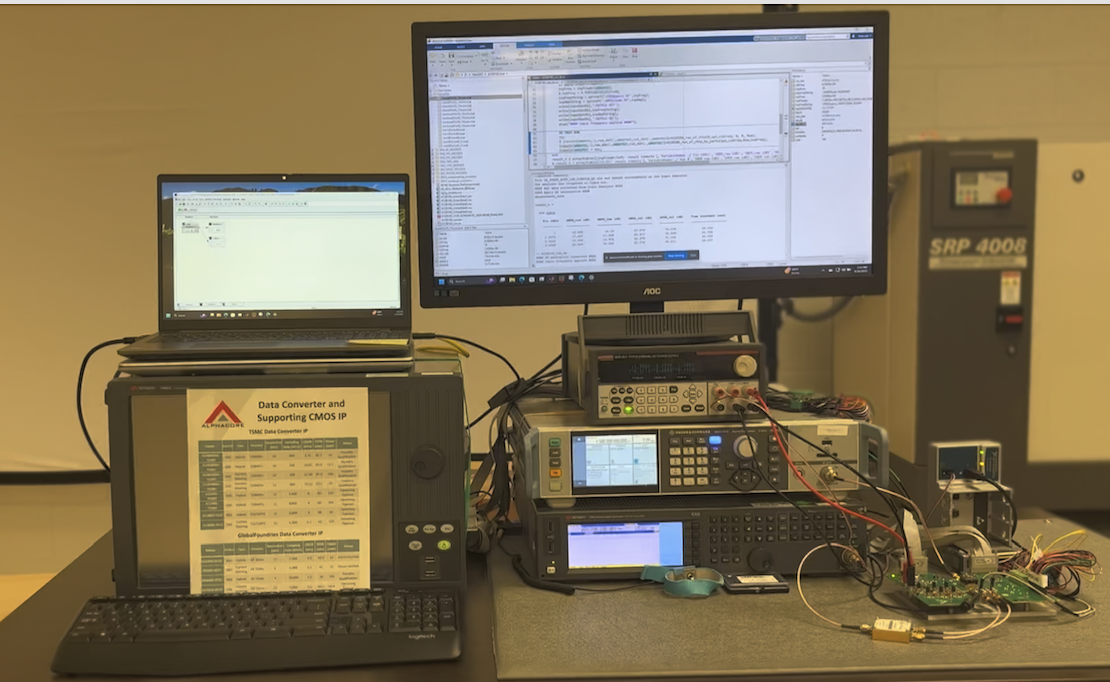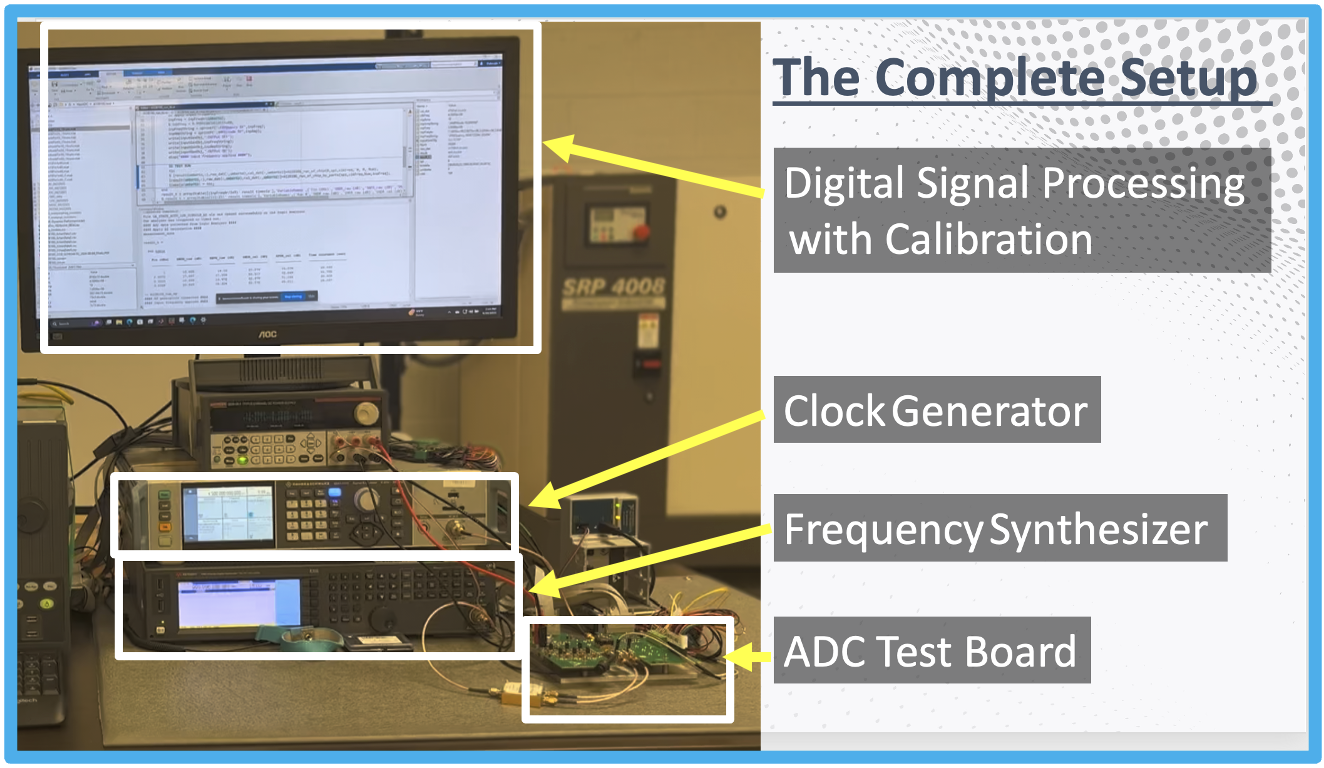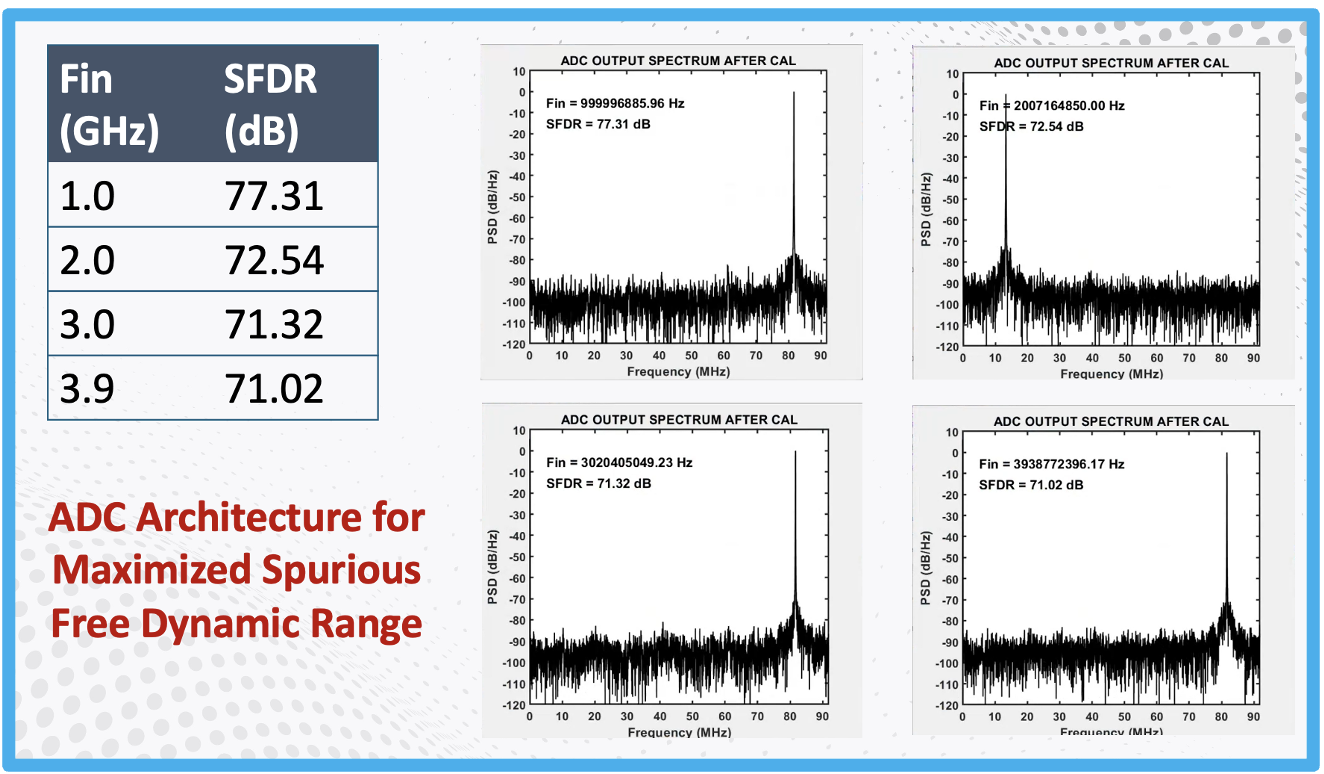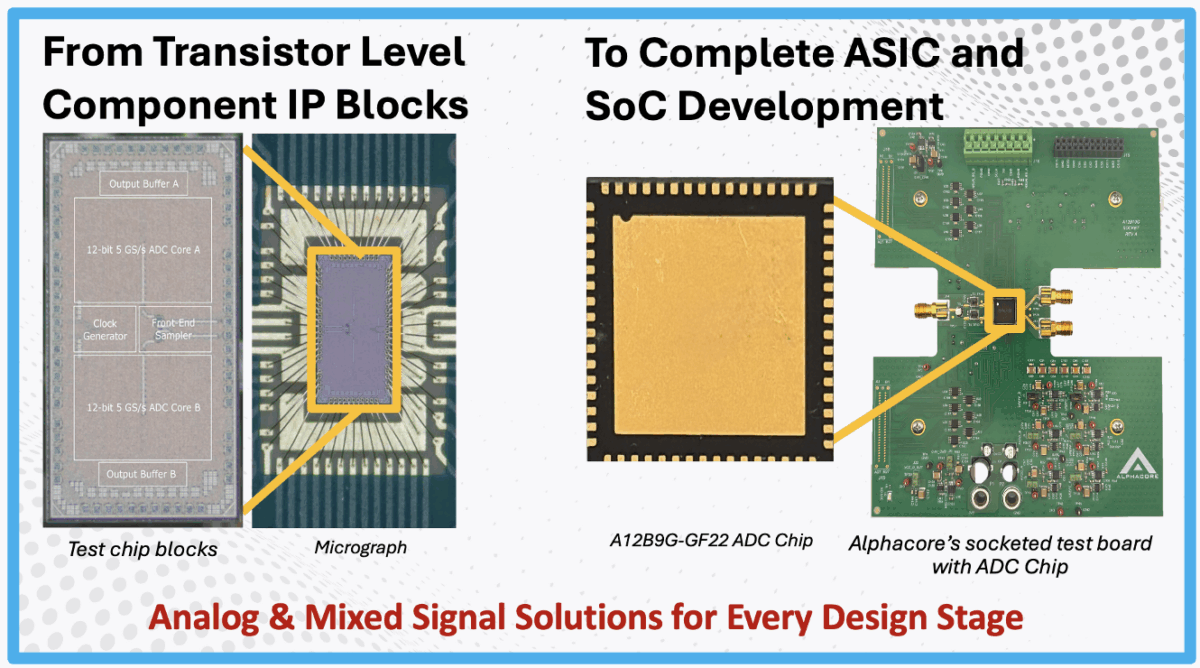Key Takeaways
- Advanced AI workloads rely on effective data conversion from analog signals to digital information for processing.
- Alphacore specializes in analog, mixed signal, and RF solutions, including high-performance analog-to-digital converters (ADCs).
- The A12B9G-GF22 ADC from Alphacore demonstrated impressive results with 9 giga samples per second at 12-bit resolution using less than 100 milliwatts of power.

There is always a lot of buzz about advanced AI workloads at trade shows. How to train them and how to run them. Advanced chip and multi-die designs are how AI is brought to life, so it was a perfect fit for discussion at a show. But there is another side of this discussion. Much of the work going on in AI workloads has to do with processing data acquired from the real world around us. There are massive sensor networks everywhere acquiring all kind of information. The critical link for all this is data conversion – converting the analog signals from sensor networks into digital information that can be processed by AI workloads. Getting this part right is critical and it’s not easy to do.
That’s why a recent presentation from Alphacore caught my eye. The company was showing the video of a real test run of its latest analog-to-digital converter IP in the lab, and the results were quite impressive. Here’s what I found in my tour of advanced data conversion with Alphacore.
About Alphacore
Alphacore is a company that focuses on analog, mixed signal and RF solutions. Some of its primary businesses include:
- High performance and low power analog, mixed signal, and RF electronics, including advanced analog-to-digital converters
- High-speed visible light and infrared readout ICs (ROICs) and full camera systems
- Robust power management ICs (PMICs) for space and high-energy physics experiments
- Innovative devices ensuring supply chain and IoT cybersecurity
The company also provides hardened versions of many of its products for harsh environments, including radiation and extreme temperatures. You can learn more about this unique company on SemiWiki here.
The Data Converter Demo
Alphacore presented the lab video of its A12B9G-GF22 at a recent event. The part is a low-power, high-speed analog to digital converter (ADC) intellectual property design block fabricated in the GlobalFoundries 22nm FDSOI process. A critical challenge for any ADC is delivering high accuracy results at a high data rate while consuming as little power as possible. The Alphacore IP block excels in all these areas, and the video demonstration was proof of that.
The demo configuration is shown in the photo at the top of this post. Below is a version that illustrates what equipment was used.

Alphacore showcased some very impressive results with this demo. I can tell you from first-hand experience that capturing real-time results of a precision analog demonstration like this can be quite challenging. The smallest issue can ruin the whole flow. The robust behavior and excellent results shown say a lot about the quality of this ADC.
The video showcased 9 giga samples per second with 12-bit resolution using under 100 milliwatts of power. Those are impressive results. Regarding accuracy and stability there is a parameter called spurious-free dynamic range, or SFDR. It is a measure of the ratio between the level of a desired input signal and the level of the largest distortion component in the signal’s spectrum, typically represented in decibels or dB. This is a key figure of merit for ADCs to show the circuit’s ability to distinguish the signal from noise and distortion.
To cover this part, a series of measurements were run with varying input frequencies. The resulting FFT plots reveal some excellent results as shown below.

The team explained that Alphacore’s ADC technology can be used at every design stage, from transistor-level component IP blocks to complete ASIC and SoC development as illustrated in the figure below.

To Learn More
If you have a need to connect measured data to digital algorithms, you should definitely learn more about what Alphacore has to offer. To begin, you can access a Product Brief for the A12B9G-GF22 here. And that summarizes a tour of advanced data conversion with Alphacore.
Also Read:
Alphacore at the 2024 Design Automation Conference
Analog to Digital Converter Circuits for Communications, AI and Automotive
High-speed, low-power, Hybrid ADC at IP-SoC
Share this post via:





Comments
There are no comments yet.
You must register or log in to view/post comments.